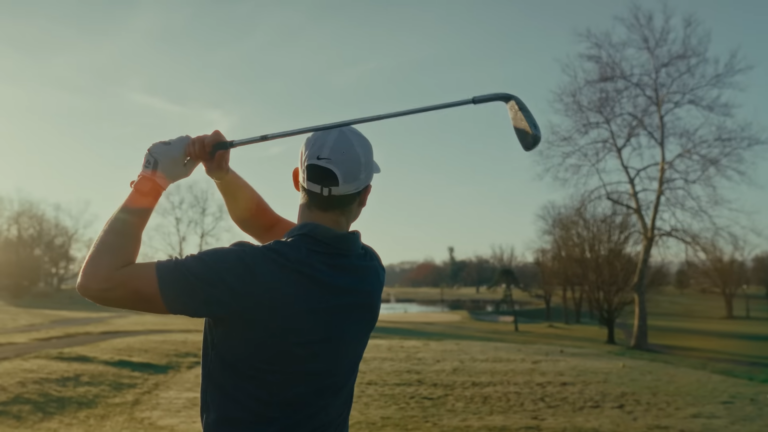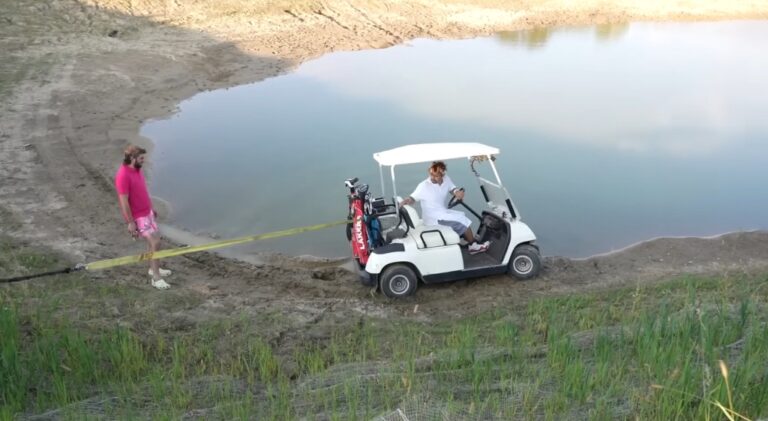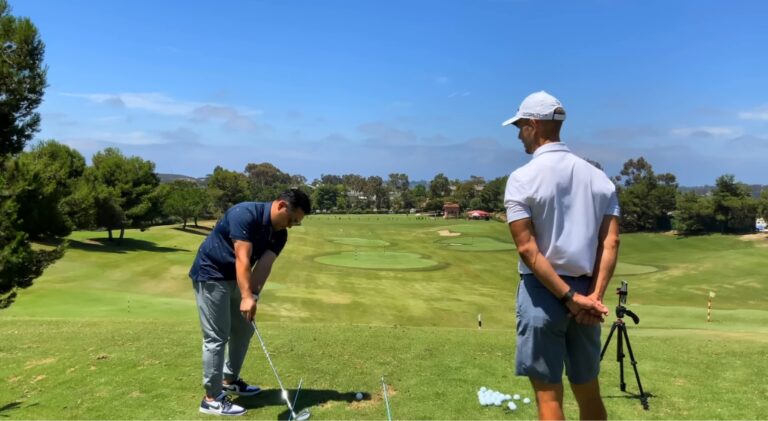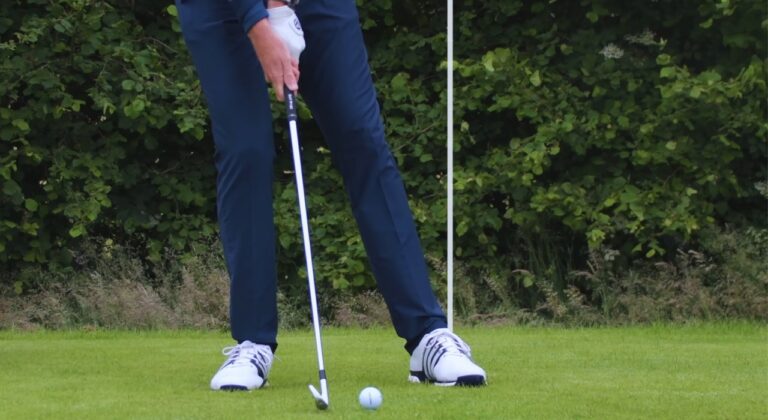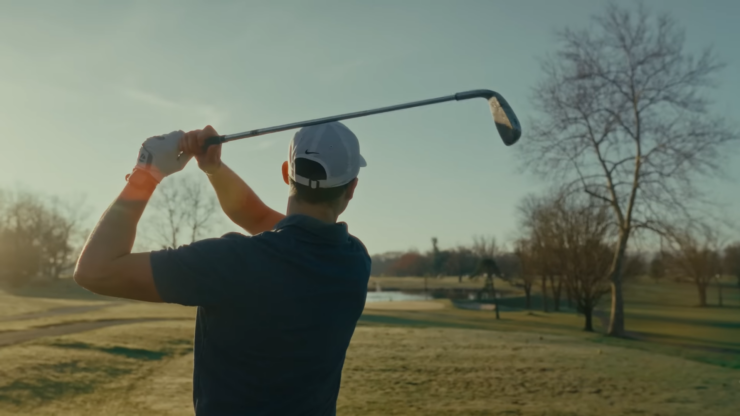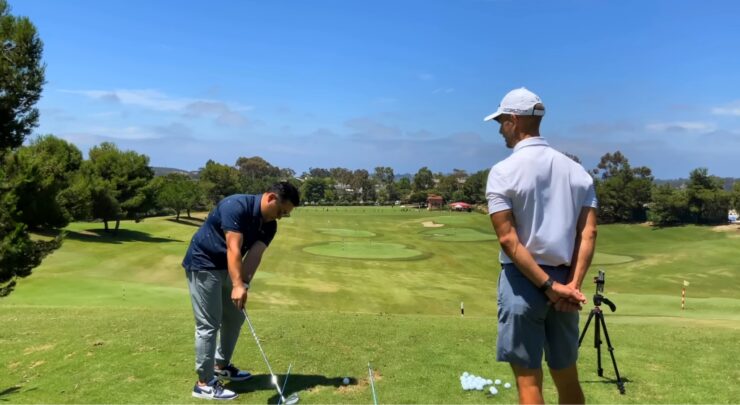As the sun gingerly rose above the meticulously maintained greens of St. Andrews, casting a soft, golden glow on the historic links, I remember standing with my club in hand, feeling a whirl of anticipation and anxiety. I was a novice golfer, eager to improve, yet bewildered by the vast intricacies of the sport.
One such complexity was the enigma of swing speed. Why could my friend, also a beginner, drive the ball so much farther than I could? The answer, I discovered, lay in the realm of swing speed.
This led me down a path of exploration, seeking to unravel the secrets behind the average swing speed for each skill level of golfer.
Today, as we journey together through this comprehensive guide, I share with you the valuable insights and knowledge accumulated over years of dedicated exploration and experience.
Together, we’ll go through the intricate balance between swing speed, skill level, and overall performance. From the eager enthusiasm of a beginner to the polished prowess of a professional, you’ll discover the average swing speeds that characterize each level and learn practical strategies to enhance your own swing speed
Why is This Aspect Crucial?
In the realm of golf, knowing precisely your swing speed is essential. It’s a critical factor that affects the distance your ball will travel. Knowing and optimizing it can ultimately enhance your game performance. Swing speed varies greatly among golfers of different skill levels.
Recognizing the average for each skill level can provide a benchmark for improvement and greater consistency in your game.
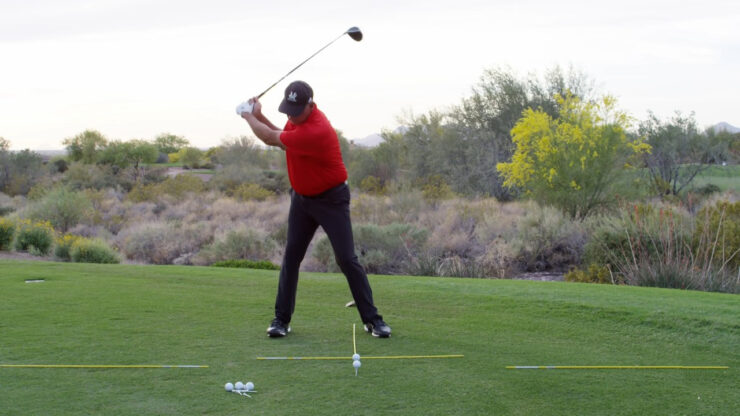
How Does it Impact Distance?
A higher typically correlates with more distance covered by the ball. As you refine and increase your speed, you can achieve longer drives, reaching the green with fewer strokes. This aspect is crucial for effectively navigating par 4 and par 5 holes.
Using the Right Measurement Tools
Various tools and technologies can accurately measure it. Utilizing these devices provides detailed insights, helping identify areas for enhancement and tracking progress over time.
Physical Fitness and Flexibility
Physical fitness and flexibility play an indispensable role in enhancing swing speed across all skill levels. A well-conditioned body with good muscle strength and flexibility can generate more power, contributing to higher speed.
Golfers who prioritize physical conditioning will find it easier to optimize their swing and improve overall performance.
Improving physical fitness can lead to a notable increase. On average, golfers may experience a 5-20% increase by focusing on strength training, flexibility exercises, and overall physical conditioning.
Emphasize core strength, lower body stability, and upper body flexibility for optimal results. Regular exercise routines, including both strength and flexibility training, can contribute significantly to enhancing.
Equipment and Technology
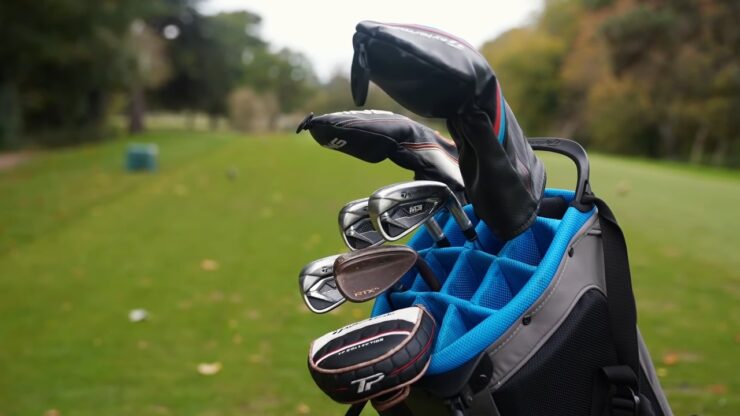
In the modern era, equipment and technology have become pivotal in analyzing and improving swing speed. Advanced equipment designed for optimal performance and technologies that provide detailed analysis contribute significantly to speed enhancement.
Understanding and leveraging these advancements can lead to substantial improvements for golfers at all levels.
The right equipment can contribute to a potential 10-15% increase. Utilizing technology for detailed swing analysis can further help in identifying and working on areas of improvement.
Choose equipment that is tailored to your playing style, physique, and skill level. Leverage technology, such as analyzers and simulators, to gain deeper insights into your dynamics and work on targeted improvements.
Beginner Level
For those who lack experience in this field, it may not initially seem a priority. However, even for beginners, understanding and working on it can set a solid foundation for future advancement.
Beginners generally have lower swing speeds as they are still in the learning phase of understanding the mechanics and techniques behind a powerful swing.
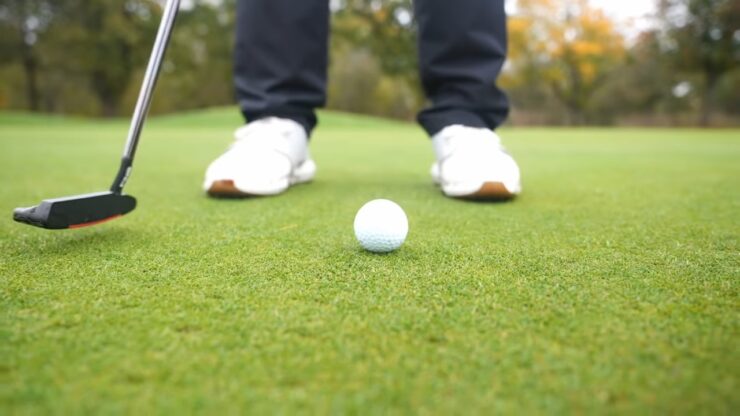
What’s an Average?
The average swing speed for male beginners is typically around 60-70 mph, while for female beginners, it’s around 45-60 mph.
These numbers provide a basic frame of reference for new golfers to understand where they stand and what they can aim for as they progress.
What Needs Improving?
Beginner golfers can focus on enhancing their swing mechanics and building strength to gradually increase. Professional guidance and consistent practice play crucial roles in this developmental phase.
Intermediate Level
Intermediate golfers have crossed the initial hurdle and possess a basic level of golf techniques. The focus becomes more pronounced as it plays a significant role in enhancing game performance at this stage.
Median levels generally display a notable improvement as compared to beginners, courtesy of their better understanding and execution of mechanics.
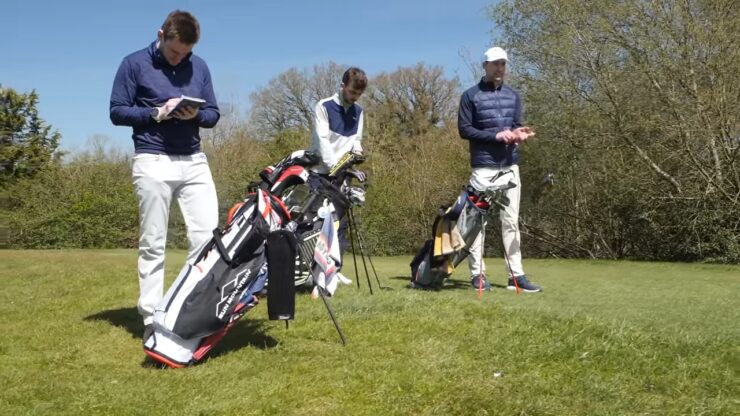
What’s the Average?
For intermediate male golfers, the average usually ranges from 80-95 mph, while for females, it’s around 65-80 mph. This increased speed reflects the enhanced technique and strength developed with experience and practice.
How Can You Improve?
Intermediate golfers can further enhance their swing speed by focusing on their form, ensuring efficient and fluid movements. Additional strength training and flexibility exercises can contribute to more power and higher swing speed.
Advanced Level
As we venture into the realm of advanced golfers, swing speed becomes increasingly paramount. A refined technique and advanced understanding of the swing mechanics distinguish this group, and they continuously seek ways to optimize for a much better performance.
Advanced golfers have the experience and skill to harness their swing speed effectively, playing a significant role in their overall game strategy.
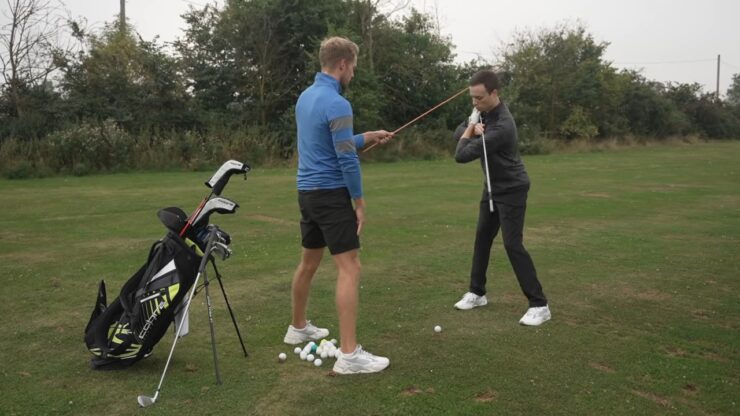
Average Swing Speed
The average swing speed for advanced players hovers around 100-110 mph, while for females, it’s typically 80-90 mph. This spike is a testament to their enhanced skill set, strength, and mastery of the game’s mechanics.
Techniques for Improvement
Advanced players can amplify their swing speed by honing their equipment setup, focusing on aspects like shaft stiffness, clubhead weight, and aerodynamics. Precise adjustments and a deep understanding of golf equipment contribute to optimizing it for advanced players.
Professional Level
Professional golfers represent the pinnacle of mastery in the game. With a profound understanding of every aspect, optimization is a fine art, reflecting their exceptional skill level and extensive experience.
Their exceptional swing speeds are achieved through a combination of natural talent, extensive training, and a deep understanding of mechanics and equipment nuances.
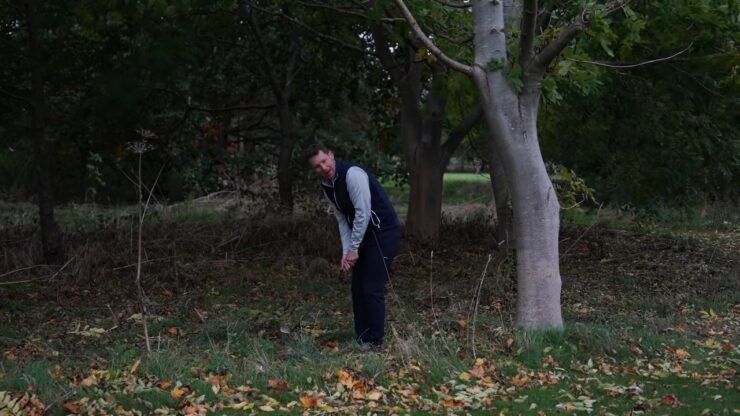
What’s their Swing Speed on Average?
For males, the average is around 110-125 mph, and for female professionals, it’s about 90-105 mph. These impressive speeds are a result of their exhaustive training, detailed focus on mechanics, and optimal equipment setups.
What Should Professionals Focus On?
Professionals continuously work on subtle aspects of their swing, equipment adjustments, and physical conditioning to ensure they maintain or even enhance this aspect. Personalized training programs and advanced swing analysis technologies play a significant role in their continuous improvement.
Senior Level
Senior golfers bring a wealth of experience to the game. While physical strength may wane, their technical mastery and strategic approach play a vital role in optimizing it further.
Knowing exactly the average for this age group helps senior golfers make strategic adjustments to their game, ensuring they continue to enjoy and excel in the sport.
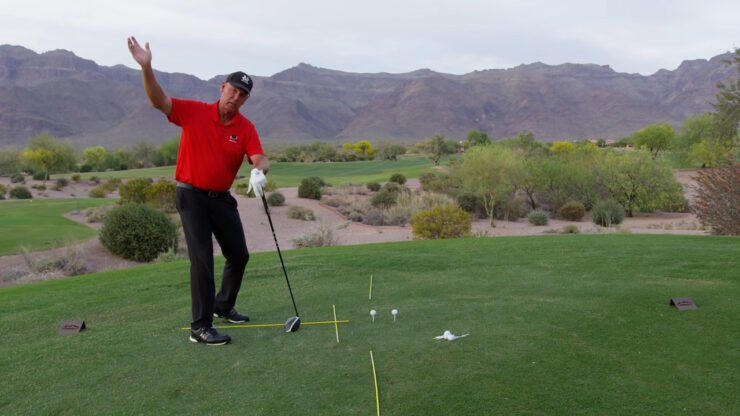
What Does Mastering Look Like?
Senior male golfers typically range from 70-90 mph, while for female senior golfers, it’s around 60-75 mph. These numbers reflect adjustments for age-related factors, with an emphasis on technique and strategy to maintain effective speeds.
Do They Need Improvement?
Senior golfers can focus on flexibility and mobility exercises to enhance their swing speed. Ensuring the right equipment, particularly lightweight and flexible shafts, can also make a significant difference in maintaining and even improving speed for senior players.
Youth Level
The younger brigade brings exuberance and energy to the fairways. Youth golfers are at the beginning of their golf journey, knowing how you perform in every particular segment is essential for the future progress.
Proper training and insights into swing speed can help youth golfers develop good habits, solid techniques, and a deep love for the game. For male youth golfers, it might range from 70-90 mph, while for their female counterparts, it can be around 60-70 mph.
These are average estimates and can vary based on the age, physical development, and training of the individual young golfer. Youth golfers can significantly benefit from professional coaching that emphasizes the fundamentals of a good swing, including posture, grip, and balance.
Developing these aspects early on provides a robust foundation for increasing it as they grow and mature.
How It Manifests in Professional Tournaments?

The average swing speed of professional golfers varies based on several factors including age, sex, and physical condition. Generally speaking, the following are the average swing speeds for professional golfers:
- Men Professionals:
- PGA Tour Professionals: on the PGA Tour is typically around 113-115 miles per hour (mph). Some of the fastest swingers on the PGA Tour, such as Dustin Johnson and Rory McIlroy, can consistently swing over 120 mph.
- Senior Tour Professionals: Professional golfers on the Senior Tour (Champions Tour), who are older, generally have a slightly lower average. The average on the Senior Tour is usually around 105-110 mph.
- Women Professionals:
- LPGA Tour Professionals: Female professional golfers on the LPGA Tour generally have an average swing speed between 90 and 100 mph.
These figures are averages and the actual for a professional golfer can be either higher or lower than the figures mentioned.
The swing speed is one of the most crucial factors in determining the distance of a golf shot, and professional golfers often work on increasing this segment with fitness training and swing mechanics adjustments to gain an edge in competitions.
FAQ
Can swing speed be improved regardless of age or fitness level?
Improving golf swing speed is a goal for many players, but it’s important to acknowledge that individual capacity for improvement can be influenced by factors such as age and fitness level. However, with the right approach, most individuals can see some level of enhancement in their swing speed.
How do weather conditions affect it?
Weather conditions wield a considerable influence on the average swing speed for each skill level of golfer. The temperature plays a significant role in this aspect. Cold weather tends to stiffen the muscles, making them less responsive and agile.
This stiffness can lead to a decreased swing speed as the golfer may not be able to move as fluidly as in more temperate conditions. The golf equipment, especially the ball and club, may also perform differently in colder weather, impacting the swing speed and overall game performance.
In contrast, warm weather can enhance the swing speed. The muscles are more relaxed and flexible, allowing for a fuller, more powerful swing. The equipment, too, performs at its optimum, contributing positively to the swing speed.
Extremely high temperatures might cause fatigue and dehydration, leading to a reduction in swing speed due to the lack of physical stamina.
Should I prioritize swing speed over other aspects of my game?
Prioritizing one aspect of your game, such as swing speed, over others is not generally advisable. Golf is a multifaceted sport, and focusing solely on swing speed can leave other crucial areas of your game unattended.
Improving your swing speed can indeed add distance to your shots, potentially leading to lower scores as you can reach the green in fewer strokes. However, without an accompanying focus on accuracy and control, increased swing speed may lead to off-target shots and higher scores.
It is essential to strike a balance, ensuring your swing speed complements other aspects of your game like accuracy, timing, and strategy.
Are there any risks associated with consistently trying to increase it?
Consistently trying to increase average swing speed in golf carries various risks, and it’s crucial to ensure a balance between speed and safe, proper technique to avoid potential harm.
One significant risk is the potential for injury. Efforts to ramp up swing speed can lead to muscle strains, especially in the back, shoulders, and hips. This is due to the added force and abrupt motions used when swinging the golf club with increased intensity.
These same movements can also contribute to joint injuries in areas like the wrists, elbows, and shoulders. The golf swing involves a lot of twisting and turning, and doing this with extra force can exacerbate the stress placed on these joints.
In addition to the potential for physical injury, continuously working to boost swing speed can compromise a golfer’s technique. A focus on speed might inadvertently lead to changes in swing mechanics, resulting in a lack of consistency and accuracy.
This shift can make it more likely for golfers to mishit the ball, impacting their overall game performance negatively.
Summary
As we wrap up this enlightening exploration into the world of swing speed across various skill levels, I am filled with a renewed appreciation for the depth and breadth of the game of golf. The journey through understanding and improving is a continuous one, filled with learning, practice, and consistent enhancement.
I am excited for you, and for all of us, as we apply these insights and knowledge to our game, elevating our performance and amplifying our enjoyment on the course.



